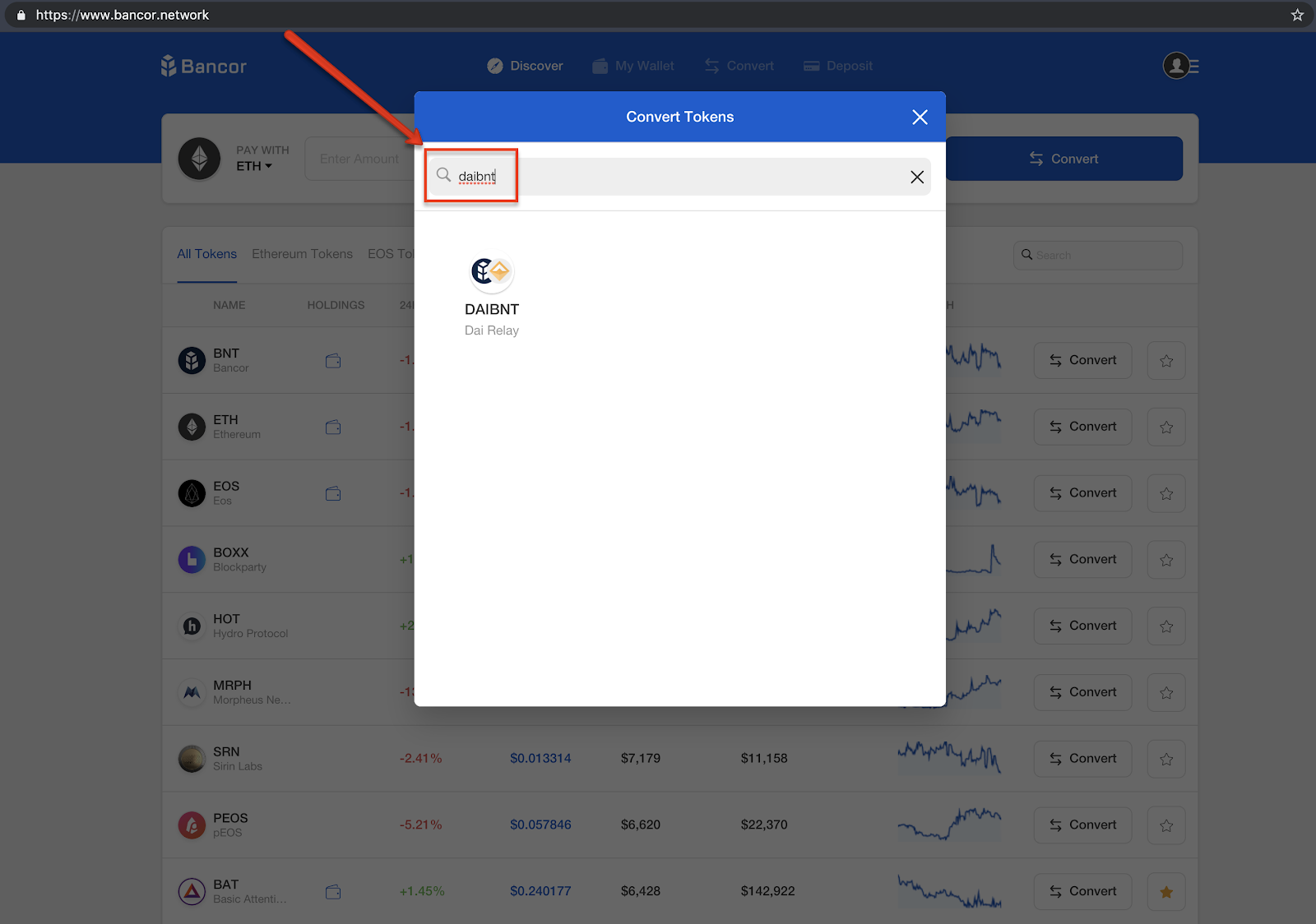
译文/Translated:
- 现在日常用户可以把他们的闲置资产储存在透明的流量库Bancor Relays,并在自动进行的代币转换中获得费用。
- 用户只要通过购买Relay代币就可以质押流量,实际就是把他们在Bancor Relay中的质押物代币化。
- Relays在处理每一个转化的过程中都会产生费用,Relay代币任何时候都可以被出售并按比例撤回Relay中对应的流量。
Bancor协议在2017年引入链上流量池,之后我们就看到了去中心化金融领域的一股创新浪潮。尤其是,“做市”,或给数字代币提供流量,对于日常用户来说已经越来越简单了。
用户现在可以把他们的闲置资产放在透明的流量池中,它会在代币自动转化的过程中产生费用。这就给去中心化资产交易所创造了新模型,也刺激和吸引了原来的机构和交易所的用户。
利用Bancor协议,数百个独立的流量提供者已经在链上流量池Bancor Relays储存了价值几百万美元的ERC20和基于EOS的代币。Relay能够进行代币对代币的转化,为流量提供提供者积累财富。
每当Relay处理转换时,每次交易都会产生一小笔流量提供者费用储存在Relay的储备金中。这些费用的功能是给流量提供者提供激励,他们可以在任何时候撤回相应的储备流量以及相应累计的费用。Relay储备金越大,交易者和Relay交互产生的滑点成本越小,就能产生更多的转换量,相应地,给流量提供者的费用就更多了。
质押在Bancor协议上的流量可以通过任何第三方应用获得,过去两年我们已经处理了近20亿美元的非监管转换。
如何在Bancor上提供流量
用户可以通过以下两个方式在Bancor上提供流量——发起一个新Relay或者把流量放在一个现有的Relay上。
要发起新的Relay,我们要求流量提供者储存和他们储存流量的代币等值的BNT(Bancor的NET代币)。我们建议新的Relay的全部价值应该在20,000美元以上,这就意味着每个Relay创建的时候就包含至少10,000美元的价值。目前,发起Relay的人决定其费用(一般是每笔交易的0.1-0.3%),而将来,流量提供者可以对费用进行投票。Bancor不从交易中收取任何平台费。
如果您手上没有20,000美元进行质押,只要您把代币存放在现存的Relay中,您同样可以储存流量和从Bancor中获得费用。用户只要购买Relay代币就可以了,这种代币就是Bancor Relays质押物的代币化。您现在您可以通过两种方式购买或出售Relay代币。
每当购买Relay代币,用户就肯定给Relay储存库提供了流量,他们因此获得的Relay代币体现了他们的贡献。任何时候,用户只要通过第三方钱包,如MetaMask, Fortmatic和Ledger,或Bancor的本地钱包,他们就可以把Relay代币转换成150多个已经和Bancor协议集成的代币(如ETH, EOS, DAI等)。
比如,想为DAI Relay增加流量,在bancor.network的Bancor转换小部件中搜索’DAIBNT’Relay Token:


恭喜,现在您拥有了DAIBNT Relay的一定份额,这样您就可以从未来所有DAI转换中获得相应的费用。
值得注意的是,不管积累的费用怎么样,DAI和BNT费用可能还是会变化的,因此也就影响到了DAIBNT代币的价格。注意很快我们会推出的工具,它能够让流量提供者更好地追踪价格动态,提高Relay代币的回报率。
另外,Relay代币也是可转换代币,换言之,和任何其他代币一样,它们也可以在外部市场或应用中交易或使用。
来自大众的流量
消除日常用户贡献流量的障碍从根本上改变了资产交换的方式和流量—哪怕是传统的流量资产—在非关联行为者和长尾效应中得到催化、刺激和去中心化的方式。
尽管我们认为去中心化的流量产生是DeFi生态的中心,但我们也不过刚刚看到来自大众的流量的力量。我们很高兴能为此添砖加瓦,也欢迎社区继续给我们提供想法和反馈
为流量,为超越,
Bancor团队
关于Bancor协议
Bancor是一个链上流量协议,通过实现代币间的持续转换,它彻底改变了人们创造价值和享有回报的方式。Bancor协议上发生的转换是在链上流量库上完成的,它能实现没有订单或交易对象的情况下利用自动化市场做市商定价和处理交易,在11,000多个ERC20和EOS代币对中,包括非区块链间的非托管转换,实现更快速、更便宜、可预测性更强的转换
如何参与Bancor
- 把代币添加到Bancor网络
- 查看Github,进入和提供代码
- 利用Bancor APIs建立dApp
- 在社交媒体上支持我们
- 加入我们的团队,我们总是有新职位求贤若渴
原文/Original:
- Everyday users can now store their idle assets in transparent liquidity pools, known as Bancor Relays, and generate fees from autonomous token conversions.
- Users stake liquidity simply by buying a Relay Token, which is a tokenized version of their stake in a Bancor Relay.
- Relays generate fees with each conversion they process, and Relay Tokens can be sold at any time to withdraw a proportional share of the Relay’s liquidity.
Since Bancor Protocol introduced on-chain liquidity pools in 2017, we’ve seen a wave of innovation in the decentralized finance space. In particular, the act of “market making” or providing liquidity to digital tokens has become increasingly easy for everyday users.
Users can now store their idle assets in transparent liquidity pools that generate fees from autonomous token conversions. This has created new models for decentralized asset exchange and unlocked incentives for users which have historically been reserved for institutions and exchanges.
Using the Bancor Protocol, hundreds of independent liquidity providers have locked up millions of dollars worth of ERC20 and EOS-based tokens in on-chain liquidity pools known as Bancor Relays. Relays are designed to perform token-to-token conversions that also accrue value for liquidity providers.
Each time a Relay processes a conversion, a small liquidity provider fee is taken out of each trade and deposited into the Relay’s reserves. These fees function as an incentive for liquidity providers who can withdraw their proportional share of the reserves including the accumulated fees at any time. The larger a Relay’s reserves, the lower the slippage costs incurred by traders transacting with the Relay, driving more conversion volume and, in turn, more fees for liquidity providers.
The staked liquidity on the Bancor Protocol is accessible by any third-party application and has been used to process nearly $2 billion in non-custodial conversions in the last two years.
How to Contribute Liquidity on Bancor
Users can contribute liquidity on Bancor in two ways — by initiating a new Relay or by contributing liquidity to an existing Relay.
To initiate a new Relay, a liquidity provider is required to deposit an equal value of BNT (Bancor’s Network Token) and the token they’re contributing liquidity to. It is recommended that new Relays are set up with no less than $20,000 of total value, meaning each of the Relay’s reserves contain at least $10,000 upon creation. Currently, whoever initiates the Relay determines its fees (which usually range from 0.1–0.3% of each trade), while in the future, liquidity providers will be able to vote on the fee. Bancor takes no platform fee from trades.
If you don’t have $20,000 to stake, you can still contribute liquidity and generate fees on Bancor by storing tokens in an existing Relay. Users can do so simply by buying Relay Tokens, which are tokenized stakes in Bancor Relays. You can currently buy or sell Relay Tokens in two ways:
- through any Bancor conversion widget (user guide); or
- via third-party liquidity provider portals integrated with the Bancor Protocol — likeCoTrader.
When someone buys a Relay Token they are essentially adding liquidity to the Relay’s reserves, and the Relay Tokens they receive in return represent their contribution. Relay Tokens can be converted at any time for 150+ tokens integrated with Bancor Protocol (e.g., ETH, EOS, DAI, etc.) using third-party wallets like MetaMask, Fortmatic, Scatter & Ledger, or Bancor’s native wallet.
To contribute liquidity to the DAI Relay, for instance, search for the ‘DAIBNT’ Relay Token in the Bancor conversion widget on bancor.network:


Congrats, you’re now the new owner of a portion of the DAIBNT Relay, entitling you to a share of all future fees that will accumulate in this Relay from DAI conversions.
Note that DAI and BNT prices may change regardless of accumulated fees, thereby affecting the price of DAIBNT tokens. Stay tuned for new tools coming soon which will allow liquidity providers to easily track these price movements and optimize Relay Token returns.
Notably, Relay Tokens are also fungible tokens — meaning they can be traded or utilized in external markets or applications just like any other token.
Liquidity from the Crowd
The removal of barriers for everyday users to contribute liquidity is fundamentally altering how asset exchange occurs, and how liquidity — in even traditionally illiquid assets — is catalyzed, incentivized and decentralized across unaffiliated actors, and the long-tail of stakeholders.
While we’ve seen decentralized liquidity emerge as a central branch of the DeFi ecosystem, we’ve only just begun to witness the power of liquidity from the crowd. We’re excited to contribute to this important phenomenon, and welcome any thoughts and feedback from the community as always.
To liquidity from beyond,
The Bancor Team
About The Bancor Protocol
Bancor is an on-chain liquidity protocol revolutionizing the way people create and share value by enabling constant convertibility between tokens. Conversions via Bancor Protocol are executed against on-chain liquidity pools using automated market makers to price and process transactions without order books or counterparties, allowing for faster, cheaper and more predictable conversions across 11,000+ ERC20 and EOS token pairs, including non-custodial conversions between blockchains.
How to get involved with Bancor
- Add your token to the Bancor Network.
- Checkout Github, jump in and contribute code.
- Build a dApp with the Bancor APIs.
- Support us on social media.
- Join our team. We have new positions posting all the time.
原文链接/Original URL: